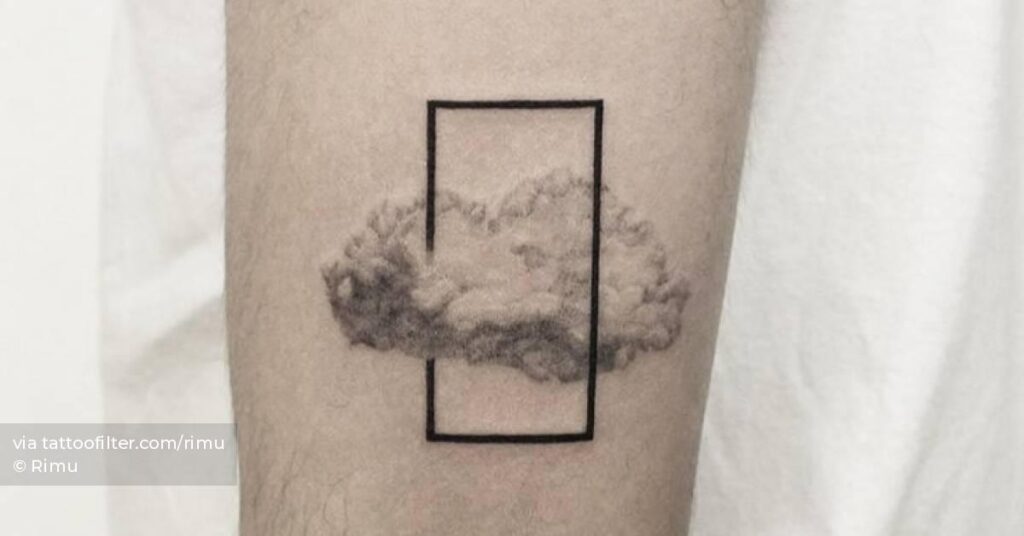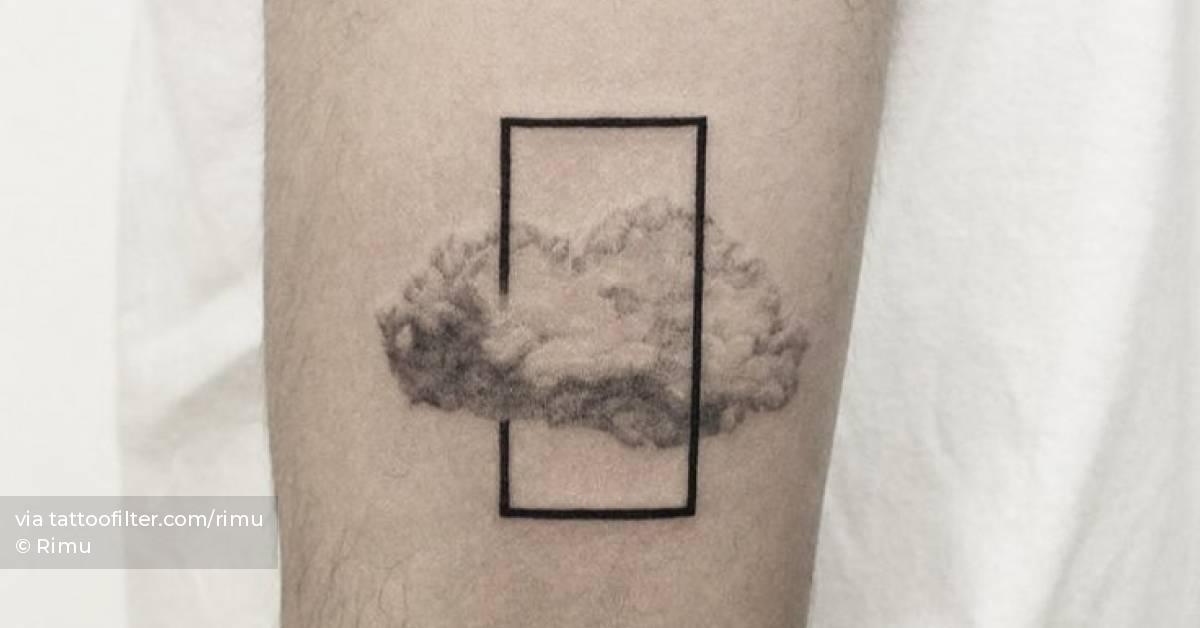
Traditional Cloud Tattoos: Exploring the Rich Symbolism and Artistic Styles
Traditional cloud tattoos are far more than just aesthetically pleasing designs etched onto skin. They represent a deep dive into cultural history, artistic evolution, and profound symbolism. These ethereal formations, often depicted in swirling lines and graceful curves, carry diverse meanings depending on the cultural context. From Japanese irezumi to Western interpretations, understanding the nuances of traditional cloud tattoos unveils a captivating world of artistry and significance. Whether you’re considering getting inked or simply intrigued by tattoo history, this exploration will shed light on the enduring appeal of traditional cloud tattoos.
The Cultural Significance of Clouds in Tattoo Art
Clouds have held symbolic weight across numerous cultures for centuries. In many Eastern traditions, particularly in Japan and China, clouds are associated with deities, spirits, and the heavens. They represent transformation, change, and the transient nature of life. This association stems from the ever-shifting forms of clouds, reflecting the impermanence of the material world. In Japanese art, for example, clouds often serve as a backdrop for mythical creatures like dragons and phoenixes, enhancing the sense of drama and power. The presence of traditional cloud tattoos in these larger compositions is not merely decorative; it is integral to conveying the overall narrative and symbolic meaning.
In contrast, Western cultures have often viewed clouds as symbols of mystery, the unknown, and even melancholy. While not always directly tied to religious figures, clouds can evoke a sense of awe and wonder at the vastness of the universe. The artistic depiction of clouds has evolved significantly over time, from realistic renderings to more stylized and abstract interpretations. This evolution is reflected in the diverse range of traditional cloud tattoos found today.
Japanese Cloud Tattoos: Irezumi and Beyond
Japanese irezumi, or traditional tattooing, is renowned for its intricate designs and profound symbolism. Clouds, known as kumo in Japanese, play a crucial role in many irezumi compositions. They are often depicted in a stylized manner, with swirling lines and bold outlines. These traditional cloud tattoos are not merely background elements; they contribute significantly to the overall narrative and aesthetic appeal of the tattoo.
Here are some key aspects of Japanese cloud tattoos:
- Symbolism: As mentioned earlier, clouds represent change, transformation, and the connection between the earthly and the divine. They can also symbolize good fortune and blessings.
- Placement: The placement of cloud tattoos is often determined by the overall design and the desired effect. They can be used to fill empty spaces, connect different elements, or create a sense of depth and movement.
- Style: Japanese cloud tattoos are typically rendered in a bold, stylized manner, with thick outlines and vibrant colors. The use of shading and gradations helps to create a sense of depth and realism.
Common motifs incorporating traditional cloud tattoos in Japanese art include dragons riding clouds (representing power and wisdom), koi fish swimming through clouds (symbolizing perseverance and transformation), and deities descending from the heavens on clouds. The versatility of clouds allows them to be seamlessly integrated into a wide range of designs.
Western Interpretations of Cloud Tattoos
While deeply rooted in Eastern traditions, the symbolism of traditional cloud tattoos has also found its way into Western tattoo art. However, the interpretations and styles may differ. In Western tattooing, clouds can represent a variety of concepts, including:
- Dreams and Imagination: Clouds can symbolize the realm of dreams, imagination, and the subconscious mind. They can represent aspirations, fantasies, and the pursuit of personal growth.
- Loss and Remembrance: In some cases, cloud tattoos can be used to commemorate loved ones who have passed away. They can symbolize the ascent of the soul to heaven or the enduring memory of the deceased.
- Freedom and Transcendence: Clouds can represent a desire for freedom, liberation, and transcendence from earthly constraints. They can symbolize a yearning for spiritual enlightenment and a connection to something greater than oneself.
The style of Western cloud tattoos can vary widely, ranging from realistic depictions to more abstract and geometric interpretations. Some artists may draw inspiration from traditional Japanese designs, while others may create their own unique styles. The color palette can also vary, with some artists preferring traditional black and grey, while others opt for vibrant colors to create a more dramatic effect. [See also: Watercolor Cloud Tattoos: A Modern Twist on a Classic Design]
Choosing the Right Cloud Tattoo Design
When choosing a traditional cloud tattoo design, it’s important to consider the following factors:
- Symbolism: What do you want your tattoo to represent? Consider the various meanings associated with clouds and choose a design that resonates with your personal beliefs and experiences.
- Style: Do you prefer a traditional Japanese style, a Western interpretation, or a unique blend of both? Research different artists and styles to find one that suits your aesthetic preferences.
- Placement: Where do you want your tattoo to be located on your body? Consider the size and shape of the design and how it will fit with your body’s natural contours.
- Artist: Choose a reputable tattoo artist who has experience creating cloud tattoos. Look at their portfolio and read reviews to ensure that they are skilled and professional.
It’s also a good idea to consult with your tattoo artist to discuss your ideas and get their feedback. They can help you refine your design and ensure that it is both aesthetically pleasing and meaningful. Don’t be afraid to ask questions and express your concerns. The more informed you are, the happier you will be with your final result. The enduring popularity of traditional cloud tattoos speaks to their adaptability and timeless appeal.
The Enduring Appeal of Traditional Cloud Tattoos
The appeal of traditional cloud tattoos lies in their versatility, symbolic depth, and aesthetic beauty. They can be incorporated into a wide range of designs, from small, minimalist pieces to large, elaborate compositions. Their symbolic meaning can be tailored to reflect individual beliefs and experiences. And their artistic style can be adapted to suit a variety of aesthetic preferences.
Moreover, traditional cloud tattoos offer a connection to ancient traditions and cultural heritage. They represent a link to the past, a celebration of artistic skill, and a testament to the enduring power of symbolism. Whether you’re drawn to the intricate details of Japanese irezumi or the more abstract interpretations of Western art, a cloud tattoo can be a meaningful and beautiful addition to your body art collection. The swirling, ethereal nature of traditional cloud tattoos offers a unique canvas for personal expression.
In conclusion, traditional cloud tattoos are a fascinating and multifaceted form of body art. They offer a rich tapestry of symbolism, artistic styles, and cultural influences. By understanding the history and meaning behind these designs, you can make an informed decision about whether a cloud tattoo is right for you. Remember to research different styles, consult with a reputable artist, and choose a design that resonates with your personal beliefs and experiences. With careful planning and execution, a traditional cloud tattoo can be a beautiful and meaningful expression of your individuality. Exploring the history and evolution of traditional cloud tattoos allows for a greater appreciation of the artistry involved.
Ultimately, the best traditional cloud tattoos are those that tell a story, reflect a personal meaning, and are executed with skill and artistry. Consider the long-term implications of your tattoo choice and ensure that it aligns with your values and aesthetic preferences. The journey of getting a traditional cloud tattoo should be as meaningful as the final result.

